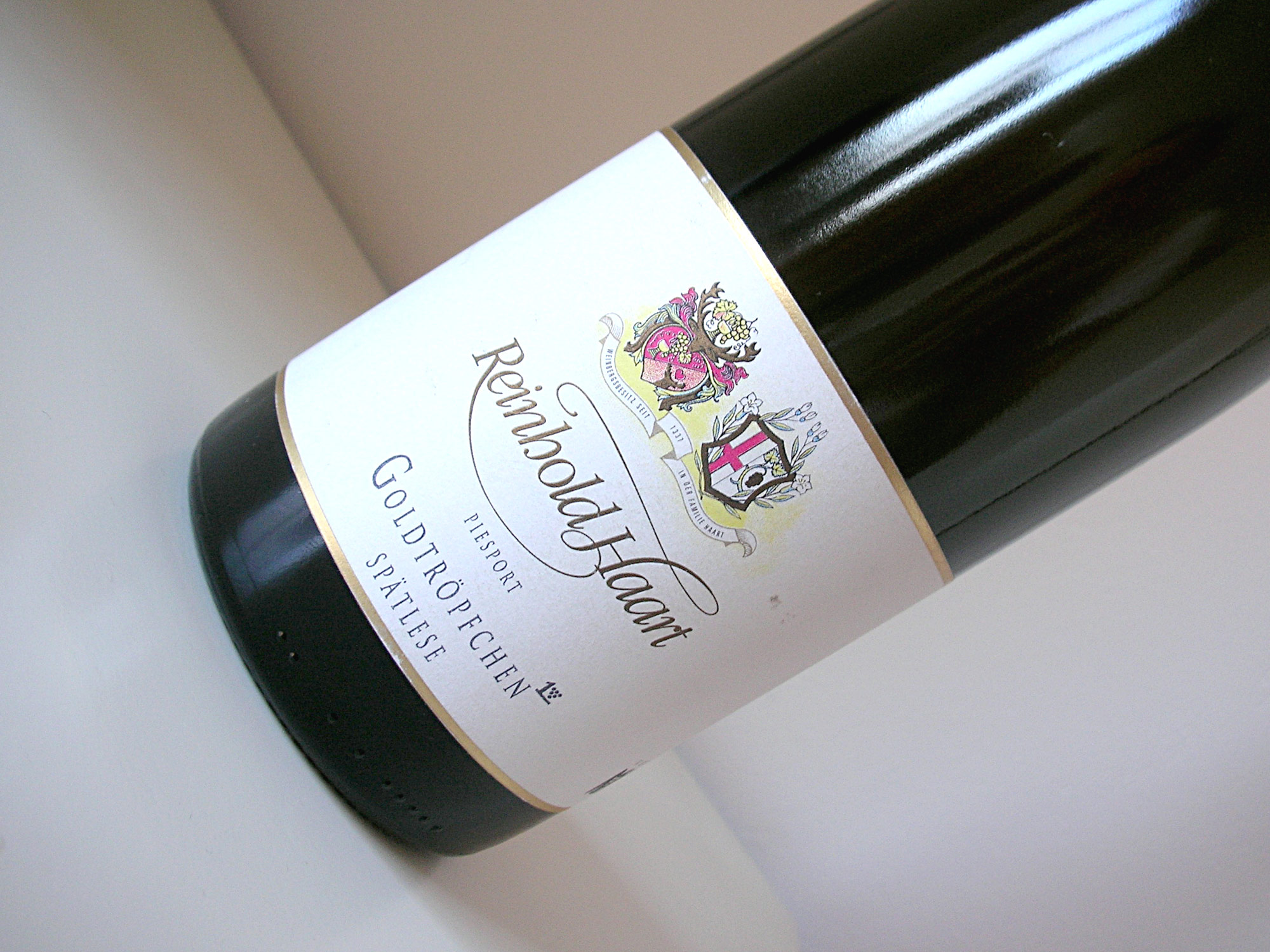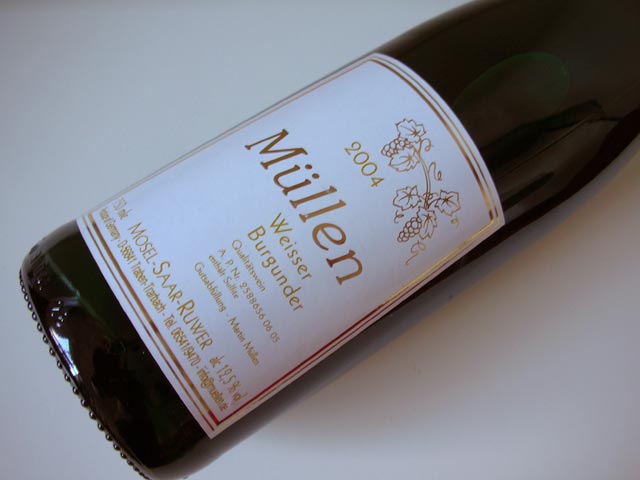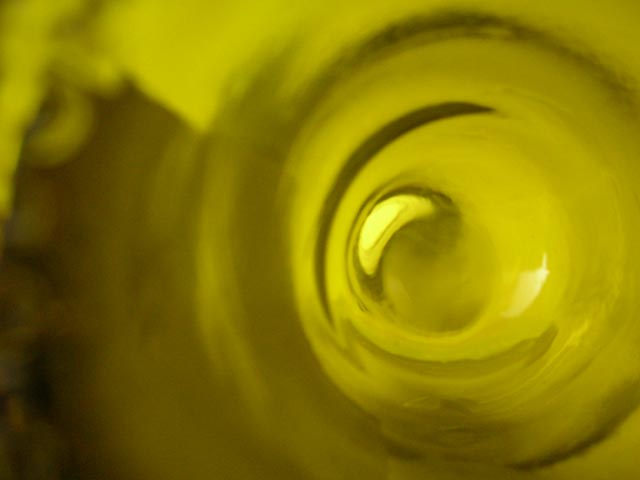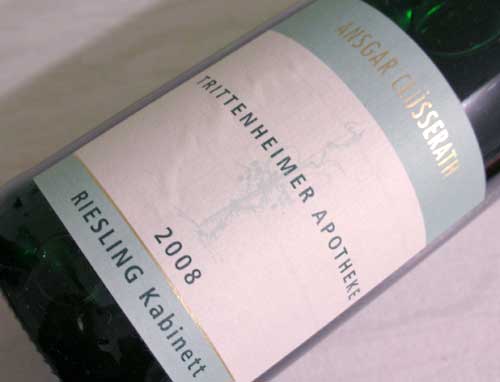Reinhold Haart, Piesporter Goldtröpfchen, Riesling Spätlese, 2003
It has been a while, way too long, actually, since I reported on a wine made by the lovely people from the Haart winery. The winery is based in the village of Piesport, a name that is infamous in the UK for cheap wine, but famous among wine lovers for the Goldtröpfchen (little drop of gold) vineyard, one of the best at the Mosel. The Haart family has been making wine since the 14th century and the sweet Rieslings of Theo Haart, who runs the family estate with his wife and son, have an excellent reputation. For me they are also the embodiment of what I love about the Mosel style of winemaking.





